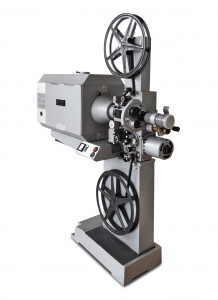Without getting into a tedious history of a sales tax, the tax was essentially created during the Great Depression in the 1930’s. The first sales tax laws were hastily and poorly drafted. The poorly drafted laws were copied from state to state. The sales tax regime was designed to tax individuals on the price of goods acquired for personal consumption. Conversely, the tax should not apply to the purchases made for business use, or what is known as business inputs.
In the early days, the easiest (not necessarily the correct) way was to tax the retail sale of tangible personal property (“TPP”). It is this primitive ideal which is embedded in the 50-60 year old sales tax laws that has created many of the issues in our much more complex economy of the 2000’s. Even with the changing of the times and the economy, our lawmakers and courts continue to ask the age old question that comes along with the foundation of the sales tax policy and design. Courts and lawmakers continue to struggle with what is “TPP” as opposed to real or intangible property. Why has no one stopped to think whether this should be the question at all? Shouldn’t the question be whether the goods are personally consumed as opposed to a business input? It is this fundamental problem and the state’s unwillingness to ask this question that has led to many of the inconsistent and puzzling rulings. These issues have been in the forefront for several decades and until the states change their way of thinking, these issues will continue to be problematic in effectively administering a state sales tax.
A classic example of the TPP versus intangible conundrum is Washington Times Herald v. District of Columbia, 213 F. 2d 23 (D.C. Cir. 1954). This case involved a newspaper publisher which purchased comic strips from an artist. The comic strips were delivered on mats (TPP). In this case the court was confronted with whether the newspaper was purchasing taxable TPP or nontaxable service contracts. The court decided that the transaction was for nontaxable artistic services because without the art the mats were practically worthless.
In a strikingly similar scenario, the D.C. District Court was faced with the same problem in 1964 in District of Columbia v. Norwood, 336 F. 2d 746. Instead of newspaper mats, Norwood purchased motion pictures. Clearly if a drawing delivered on a mat is for professional services, a motion picture delivered on a film is for services as well, right? Without much analysis the court stated that the sales were clearly of taxable TPP.
Continue reading
 Multi-State Tax Law Blog
Multi-State Tax Law Blog



 KFC licensed its valuable name to franchisors nationwide, including into Iowa. Slightly different than the related trademark license in the Geoffrey cases, KFC licensed its trademark to franchisor’s who independently owned KFC’s. Certainly the use of the KFC trademark in Iowa could not force Kentucky based KFC to pay Iowa income tax could it?
KFC licensed its valuable name to franchisors nationwide, including into Iowa. Slightly different than the related trademark license in the Geoffrey cases, KFC licensed its trademark to franchisor’s who independently owned KFC’s. Certainly the use of the KFC trademark in Iowa could not force Kentucky based KFC to pay Iowa income tax could it?
 The only Supreme Court case that attempts to address this issue is Quill Corp. v. North Dakota, in 1992. In Quill, the Court held that in order for a state to have the power to tax a company within that state, the company must have some “physical presence” within that state. To add another wrinkle, Quill dealt with the ability for a state to force a company to collect its use tax. Does this “physical presence” apply to sales tax? What about corporate income tax?
The only Supreme Court case that attempts to address this issue is Quill Corp. v. North Dakota, in 1992. In Quill, the Court held that in order for a state to have the power to tax a company within that state, the company must have some “physical presence” within that state. To add another wrinkle, Quill dealt with the ability for a state to force a company to collect its use tax. Does this “physical presence” apply to sales tax? What about corporate income tax? An October 2012 article written in the New York Times that can be found
An October 2012 article written in the New York Times that can be found 